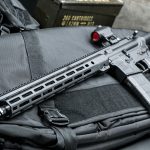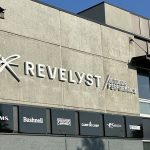Standard & Poor's Ratings upgraded Foot Locker Inc. by one grade to double-B, citing the retailer's better-than-expected results due to revenue and margin improvement. It also noted that credit metrics have “strengthened substantially” over the past year due to good performance.
FL's corporate credit rating was lifted to 'BB' from 'BB-'. Its outlook is stable, reflecting its expectation for continued modest operational improvement over the near term, because of further revenue increases and slight margin expansion.
In a statement, the rating agency said, “The upgrade reflects our expectation for “strong” liquidity (based on our criteria) in the near term and the company's enhanced performance over the past year, which was ahead of our forecast due to recent merchandising improvements. Credit metrics strengthened significantly over the last 12 months, and we anticipate they will remain stable over the coming year.”
The rating on specialty athletic footwear retailer Foot Locker reflects Standard & Poor's Ratings Services' expectation for modest operational gains and strong cash flow generation in the near term. In our view, the company is continuing to benefit from better inventory controls and reduced markdown activity, especially in footwear. Credit protection metrics have strengthened significantly over the past 12 months, commensurate with operations, and we expect them to demonstrate slight gains over the coming year.”
Foot Locker's “fair” business profile reflects its participation in the intensely competitive athletic footwear and apparel retail industry, history of inconsistent performance, and significant vendor concentration. Risk factors include weak economic conditions in the U.S. and Europe reducing consumer spending and net store openings, increased competition from vendors including Nike, and sensitivity to fashion trends, given a substantial portion of sales are to young males ages 12 to 25.”
Performance was ahead of our expectations in 2011, as the NBA lockout did not materially hurt results and athletic shoes and apparel continued to remain on trend. Same-store sales were up 9.8% compared with the prior year, and gross margin increased 190 basis points (bps) to 31.9%, due mainly to improvements in operating leverage and merchandise margin. We expect Foot Locker's continued focus on differentiating store banners, increasing higher-margin apparel sales, and testing new store concepts focused on running and basketball to continue to propel modest profit growth in the near term.
Our financial forecast assumes weak economic growth, high unemployment, elevated commodity costs, and flat mall and off-mall traffic persisting through 2013. Considering these economic assumptions, our specific projections for Foot Locker in 2012 include the following:
— Sales growth in the low-single-digit percent due to mid-single-digit net new store openings, mid-single-digit percent same-store sales increases and mid-teens percent direct sales growth.
— We expect gross margins will increase in the low- to mid-double-digit basis points, as Foot Locker continues to pass on higher input costs to customers and leverage fixed occupancy costs.
— We anticipate selling, general, and administrative expenses will
increase in the mid-single-digit percent area, because of increased marketing costs and higher store wages.
— We project adjusted funds from operations to debt will remain above 40% for 2012 as the company continues to maintain low levels of promotional activity.
— We anticipate return on capital will remain in the mid-teens percent as the company continues to invest in capital spending in addition to shareholder-friendly initiatives.”
We assess the company's financial risk profile as “significant,” as credit protection measures have improved substantially due to performance gains in 2011. Leverage declined to 2.7x for the year ended Jan. 28, 2012, compared with 3.6x for the prior period in 2011. Interest coverage increased to 4.6x from 3.2x period over period. As debt has remained relatively unchanged year over year, the enhanced credit protection reflected a 30% increase in EBITDA.
Foot Locker's minimal debt provides limited opportunity for significant credit metric enhancement through pay down. In fact, full repayment would only result in a 0.2x leverage improvement. Instead, we anticipate further operational growth in the women's running and casual categories will help the company maintain leverage under 3.0x over the next 12 months.
Foot Locker has significant vendor concentration but has built strong
relationships with key branded vendors such as Nike, Adidas, and Reebok.
Dependence on a few select suppliers has increased rather than lessened over the past few years as the industry has consolidated. As of year-end 2010 (the latest figures available), Foot Locker purchased approximately 63% of its merchandise from Nike and about 82% of its merchandise from its top five vendors. The company enjoys significant allocation of exclusive and limited distribution products due to these strong relationships. However, there is also risk in Foot Locker's dependence on increasingly vertically integrated manufacturers to introduce new products that resonate well with consumers.
Liquidity
We assess Foot Locker's liquidity as strong, with cash on hand and cash generated from operations likely to exceed uses for the next 12 to 24 months.
Cash sources include $851 million of cash on hand, free operating cash flow in the mid-$200 million area, and nearly $200 million of availability under the
company's credit facility as of Jan. 28, 2012. Foot Locker's light maturity schedule over the long term bolsters its liquidity.
We anticipate cash uses could remain moderate and will be primarily composed of $160 million in capital expenditures, some investments in working capital,
dividends, and share repurchases. The company announced approval of a new, three-year $400 million share repurchase program in the past quarter,
extending through January 2015. It also announced a 9% increase in its quarterly dividend. As a result, we expect about $110 million in dividends and
between $125 million to $150 million in share repurchases in 2012.
Relevant aspects of the company's liquidity, in our view, are as follows:
— We estimate coverage of sources over uses to be above 1.5x.
— We expect that net sources would be positive, even with a 30% decline in EBITDA.
— The company has no financial performance covenants and no debt maturities over the near term. We believe that the company has sound relationships with the banks.
Outlook
The stable outlook reflects our view that Foot Locker should continue to improve modestly over the near term, because of slight revenue growth and margin expansion. Although we anticipate that growth is likely to slow over the coming year because of macroeconomic headwinds, we expect it to remain positive.
We could lower the rating if Foot Locker performs worse than our expectations over the near term because of a material weakening of consumer demand, severe merchandise missteps, or increased competition. Under this scenario, leverage would approach the mid-3.0x area because of flat same-store sales and a 120-bps margin decline. Although unlikely, we could raise the rating if the company can demonstrate continued performance gains without meaningful sales or margin erosion. Under this scenario, revenue growth would be in the
high-single digits and margins would expand about 100 bps over the next year due to higher-than-expected net store openings in the U.S. and Europe.”















